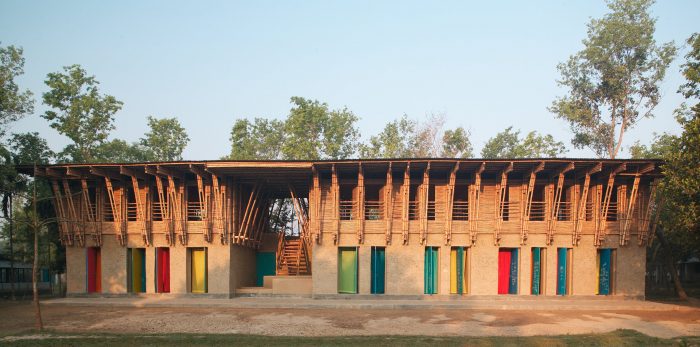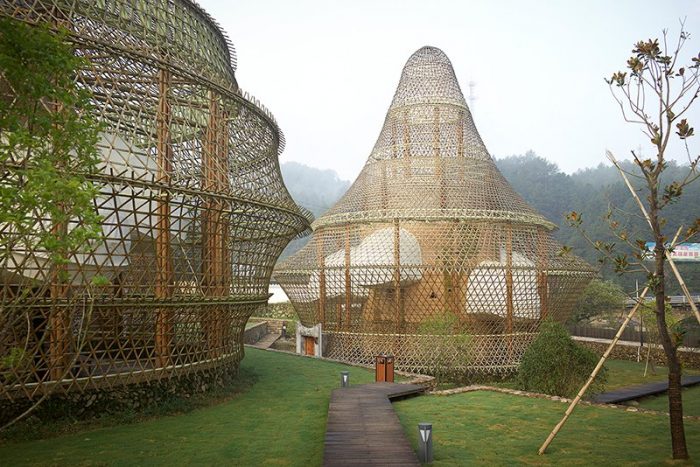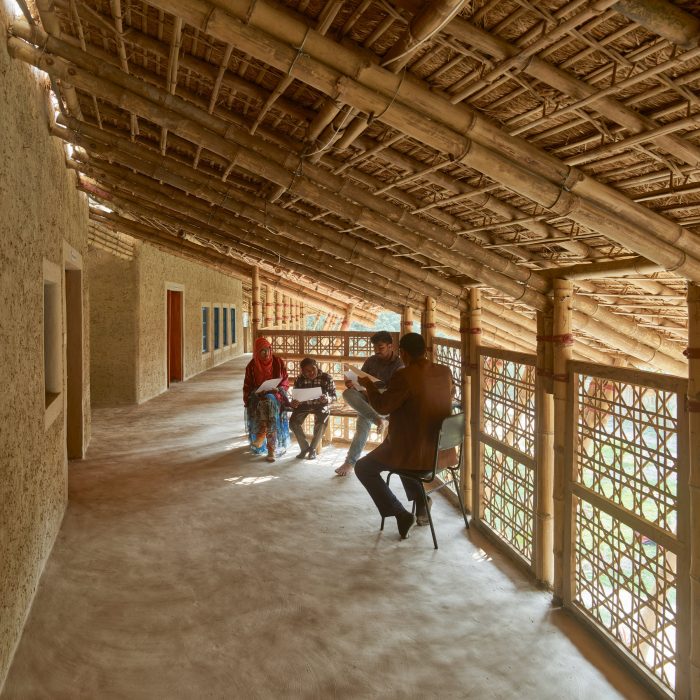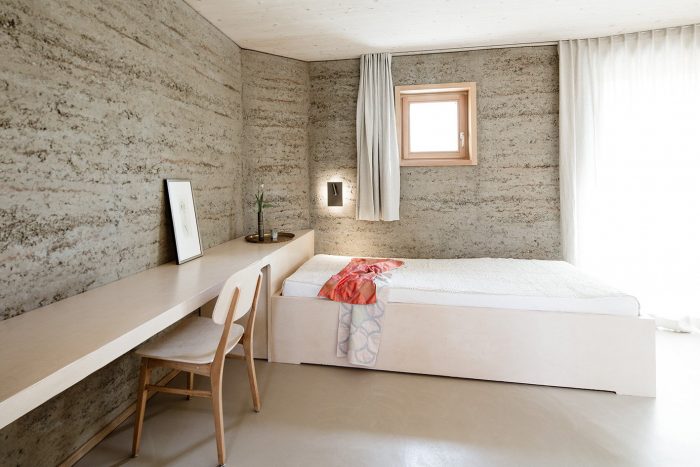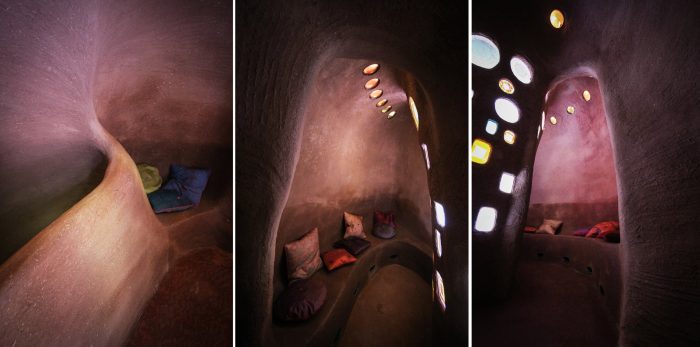
- Permbajtja
- prev
- next
- prev
- next
HIGHLIGHT : ANNA HERINGER
Architecture is a tool to improve lives.
The vision behind, and motivation for my work is to explore and use architecture as a medium to strengthen cultural and individual confidence, to support local economies and to foster the ecological balance. Joyful living is a creative and active process and I am deeply interested in the sustainable development of our society and our built environment. For me, sustainability is a synonym for beauty: a building that is harmonious in its design, structure, technique and use of materials, as well as with the location, the environment, the user, the socio-cultural context. This, for me, is what defines its sustainable and aesthetic value.
Anna Heringer
For Anna Heringer, architecture is a tool to improve lives. As an architect and honorary professor of the UNESCO Chair of Earthen Architecture, Building Cultures, and Sustainable Development she is focusing on the use of natural building materials. Her diploma work, the METI School in Rudrapur got realized in 2005 and won the Aga Khan Award for Architecture in 2007. Opver the years, Anna has realized further projects in Asia, Africa, and Europe. Her design and aproach to architecture is strongly linked to sustainability, natural materials and using tradional building methods.
Have a look at projects :
METI school, Bangladesh
"The final result (...) is a building that creates beautiful, meaningful and humane collective spaces for learning, so enriching the lives of the children it serves." [Jury of The Aga Khan Award for Architecture 10th Circle]
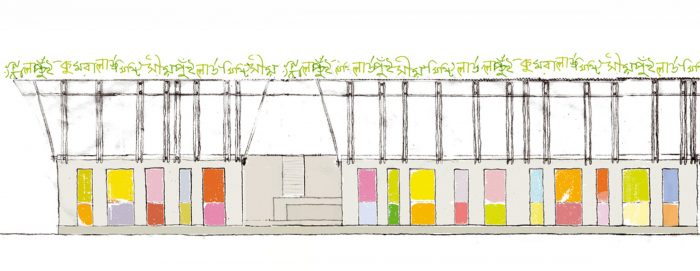 "All too often, aspirations towards modernity in developing countries have malign economic and cultural effects where construction is concerned. Traditional materials and techniques are abandoned in favour of the import of expensive and sometimes energy-inefficient materials and products, benefiting only manufacturers in more advanced economies.
"All too often, aspirations towards modernity in developing countries have malign economic and cultural effects where construction is concerned. Traditional materials and techniques are abandoned in favour of the import of expensive and sometimes energy-inefficient materials and products, benefiting only manufacturers in more advanced economies.
The outcome can at worst be the imposition of alien buildings, forms and materials which don't last long and are difficult to maintain. Their only merit is to look new for a time. By contrast, this joyful project, in a poor rural area of Bangladesh (said to be the world's most densely populated country), shows that new and refreshing local identity can be achieved by exploiting the immediate and the readily available (...)." [Paul Finch, Architectural Review, UK]
DESI Trainingcenter, Rudrapur, Bangladesh
Self-sufficiency and appropriateness
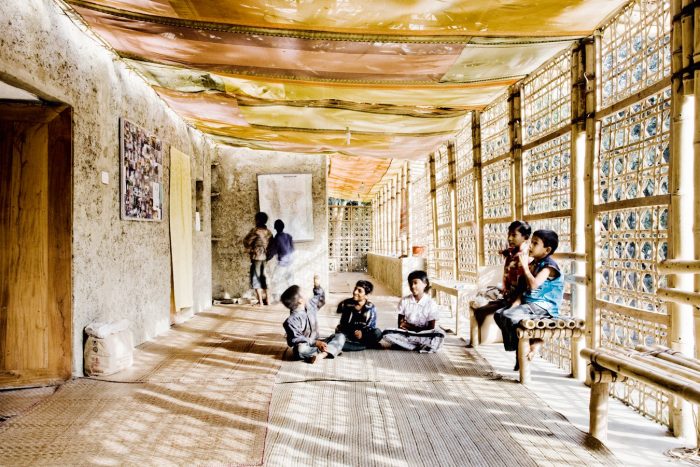
The DESI building is a new interpretation of the traditional Bangladeshi homestead. Typically in rural Bangladesh all of the various household functions - eating, sleeping, washing, etc. - are performed in separate structures that are built around a central courtyard. The DESI building, however, attempts to incorporate all of the functions of working and living into a single structure. The design is geared toward a lifestyle that is no longer linked with agriculture, but still linked to the rural context and culture.

Bamboo Hostels in Baoxi, China
The three hostels - the dragon, the nightingale and the peacock - aim to show a quite radical example of building simple yet poetic and humane in a way that it pushes the skills of local craftsmen onto a new level and leaves the biggest part of the profit with the community.
The clients and initiators of this project as well as my aim is to proof that we can create safe, beautiful and humane architecture with natural building materials, in this case particularly with bamboo.
With our planet`s limited resources it is not possible to build for seven billion people safe and good houses in steel and concrete only. The use of natural building materials is vital in order to enable a sustainable and fair development.
Natural materials such as bamboo and mud often have a bad image. We need pilot projects like the one in the Bamboo Biennale to proof the excellent structural quality as well as their beauty and uniqueness in order to anchor them in contemporary architecture. Using non standardized, natural, local building materials will lead to more diversity in urban and rural regions, will enrich the culture of China`s contemporary architecture and preserve our planet`s ecosystem.
Anandaloy: Centre for People with disabilities + Dipdii Textiles studio
The Anandaloy Building hosts a center for people with disabilities combined with a small studio for the production of fair textiles (Dipdii Textiles).
The building`s architecture explores the plastic abilities of mud in order to create a stronger identity. Mud is regarded as poor and old-fashioned material and inferior to brick, but to, Studio Anna Heringer, it doesn’t matter how old the material is, it is a matter of the creative ability to use it in a contemporary way.
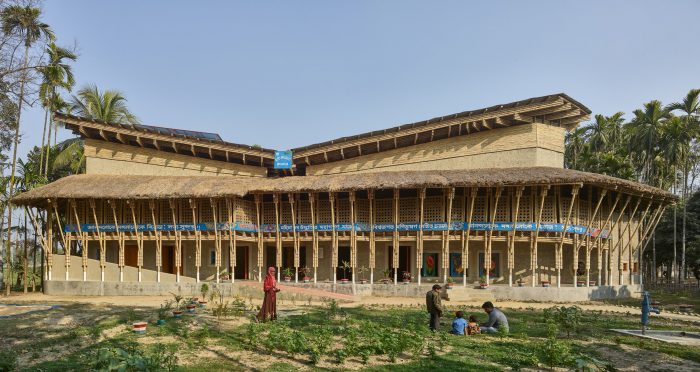
With that particular mud technique, called cob, no formwork is needed and curves are just as easy to be done than straight walls. Unlike the other buildings in that area that are erected in a rectangular layout, the Anandaloy Building breaks out of the mold. It dances in curves, the ramp winds playfully around its inner structure.
On a symbolic level the building signals: it is great that we human beings are all different. With its joyful curves it radiates the message: diversity is wonderful!
RoSana - Ayurveda Guest House
It was the common goal of the clients, architects and craftsmen to build the RoSana guest house as healthy as possible for the people and the planet. We therefore based the construction on timber, earth and willow and reduced the amount of concrete, steel, all sort of foams, glues and unhealthy materials drastically. The buildings purpose is a guesthouse for the Ayurveda retreat center RoSana in Rosenheim, Germany.
It’s made for people who seek mental and physical stress relieve, who want to become focussed on their inner strength, recharge their energy, get grounded.
The rooms therefore are composed with only few materials: rammed earth walls, mud plastering, mud-casein floors, handcrafted ceramics on a load bearing timber structure. This simplicity of the material choice and the nuances of craftsmanship expressed in the diverse ways of using earth, calms down the mind as well as it opens the senses.
Although made in a very refined way, natural materials are never really perfect and this is GOOD. Especially when being exhausted and sick, perfect surfaces just enhance the feeling of „being not perfect enough“. Instead the earthen walls embrace those inhabitants and provide a feeling of being part of nature, being grounded along with a air of archaic authenticity, that roots us back to the basic elements of our being.
Omicron living rooms
Design team: Martin Rauch and Anna Heringer.
Fair trade meets regionalism. The project, 3 sculptures that serve as meeting rooms for the workers, is a commitment to support craftsmanship locally as well as in Bangladesh and in India. The aim is to create an atmospheric space of high quality for the employees of Omicron, and at the same time to make a social economic impact by involving a high amount of local craftsmanship.
The 3 sculptures can be seen as living rooms for the companies employees, to have meetings in a comfortable poetic atmosphere to retreat, contemplate, meditate, brainstorm, to have a coffee break, to chat.
